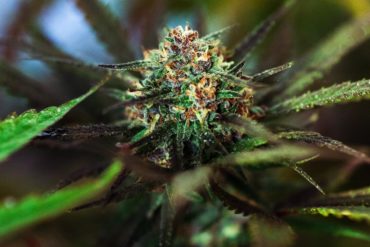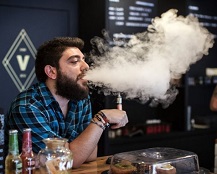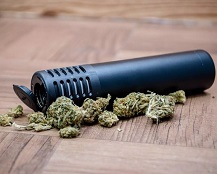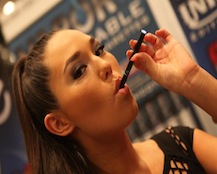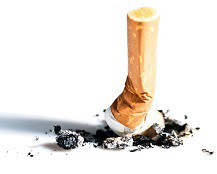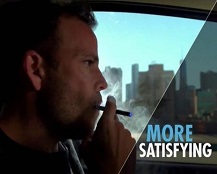A new study compares vapers to smokers in terms of their exposure to toxic chemicals. Stanton Glantz claims the study shows that most vapers "might as well smoke," but is it true?
A new study looking into the effect of e-cigarette vapor and liquid on the lungs has found evidence of oxidative stress, inflammation and toxicity, and suggests that dripping is likely worse for you than using a clearomizer or tank. The good news is that while e-cigarettes may be worse than air, the study does indicate that e-cigarettes are much safer than cigarettes.
Cannabidiol (CBD) and tetrahydrocannabinol (THC) are two of the most important cannabinoids found in varieties of cannabis. Cannabinoids are a...
Just when you thought the whole formaldehyde issue had been abused enough, utterly debunked by subsequent research and relegated to the slush-pile of over-stated risks of e-cigarettes, it turns out there’s more. The Center for Environmental Health has announced that they’ve found “high levels” of cancer-causing chemicals in the majority of almost 100 e-cigarettes tested.
A new survey of Minnesota-based middle and high school students has provided further evidence that the potential gateway to smoking is not a genuine concern, but, as is the pattern with such studies, it’s being presented as showing the exact opposite.
Vaping marijuana is becoming increasingly common since the rise of nicotine vaping, but is it safe? How do the risks compare to those from smoking cannabis? We've taken a look at the evidence to find out.
A new study from Dr. Konstantinos Farsalinos has offered confirmation that previous formaldehyde scares were due to “dry puffs,” and that with more capable atomizers (even at high powers), the levels generated are vastly lower than from cigarettes. The study shows that vapers can easily identify dry puffs, and it's only in these conditions that cigarette-like levels of aldehydes are created.
With widespread claims that e-cigarettes are a threat to public health, evidence-based assessments of the risks are desperately needed. Public Health England has just released such an assessment - updating their previous report in line with new evidence - and is strongly pushing the conclusion that e-cigarettes are 95 percent less harmful than smoking.
A new study has found that for every e-cig pod not purchased as a result of raising taxes on vaping, 6.2 additional packs of cigarettes will be sold on average.
Prof. Riccardo Polosa and Dr. Pasquale Caponnetto have had a letter published in the Lancet Oncology this month, after having spotted the sort of editorial you’d expect to see in a misguided tabloid rather than a prestigious journal.
A recent study found that about a quarter of teens who've vaped have tried dripping, and the media wants you to be very worried about that. The truth is, though, the risks of dripping have been blown hugely out of proportion.
Vaping is over 95% safer than smoking, but most people don't know it. If we give smokers accurate information, they're more likely to choose harm reduction. So why aren't more people telling the truth about vaping?
According to the findings of a new study, switching from smoking to vaping means reducing your exposure to toxic chemicals by a factor of about (probably over) 1,500. However, this study comes from tobacco company (and owner of Blu and SkyCig) Lorillard, so is it really reliable, or just a hollow PR stunt?
Yesterday, the Surgeon General released his first report on e-cigarettes, and it comes to completely different conclusions to the Royal College of Physicians' report from earlier this year. Why? Because he puts anti-vaping talking points ahead of the facts.
A new study looks at data from over 13,000 smokers and former smokers in the EU, finding that daily vapers are much more likely than non-vapers to have quit smoking in the past five years.
Regulators’ decisions need to be based on sound science rather than unsupported assertions and media-driven hysteria, but we increasingly see more weight given to the latter when it comes to e-cigs.
New research from the University of East London has added further evidence that e-cigarettes are extremely effective for reducing cigarette use, with a total of 88 percent of the sample reporting at least a significant reduction in smoking.
The CDC has released the next set of National Youth Tobacco Survey data, and despite spending the last few years continually harping on about the rising use of e-cigarette by youth and its potential as a gateway to smoking, the “concern” is growing less and less believable, as the data strongly suggests that e-cigarettes are actually causing dramatic declines in youth smoking.
The issue of reliability in e-cigarette research is being brought into the limelight recently. So, in the manner of “A Rough Guide to Spotting Bad Science,” is there anything we should be on the lookout for when considering the findings of e-cigarette-related studies? Whether by incompetence or by design, there are many common problems with vaping related research - and how its often reported - that any critical reader of the science should keep an eye out for.
A new study claims to have found that watching ads for e-cigarettes featuring the act of vaping increases the urge to smoke for daily smokers and weakens intentions to continue abstaining for ex-smokers. However, taking a look at the details makes it obvious that this study must be interpreted with caution.



